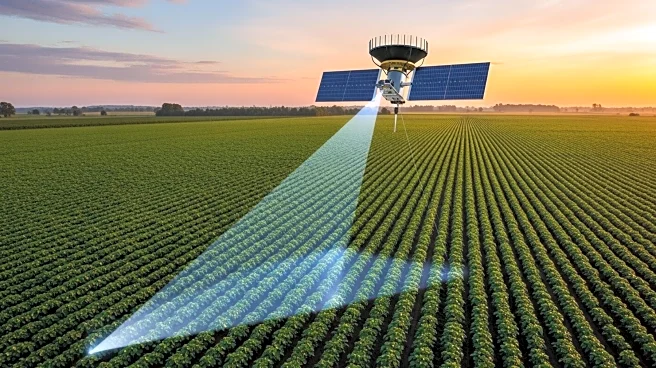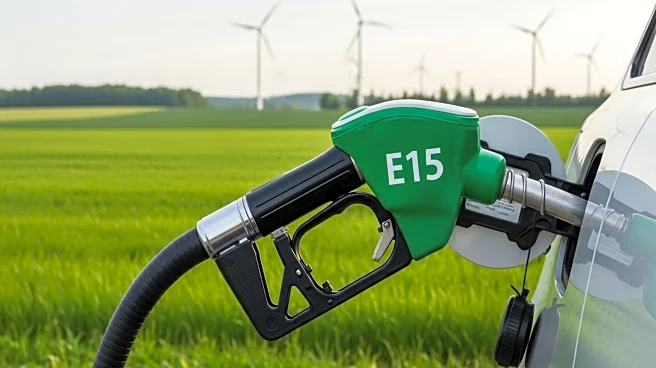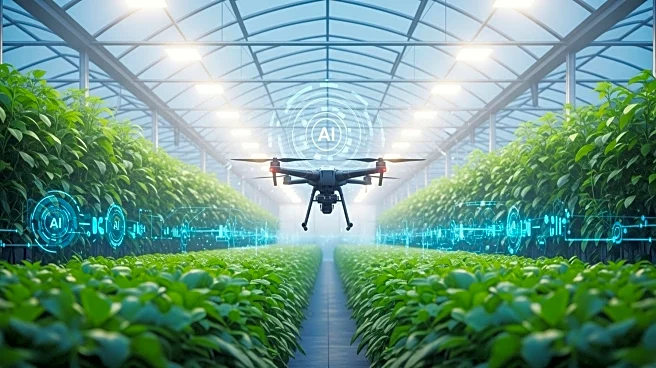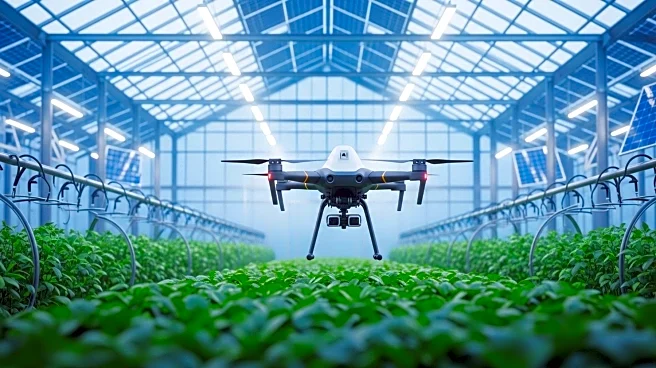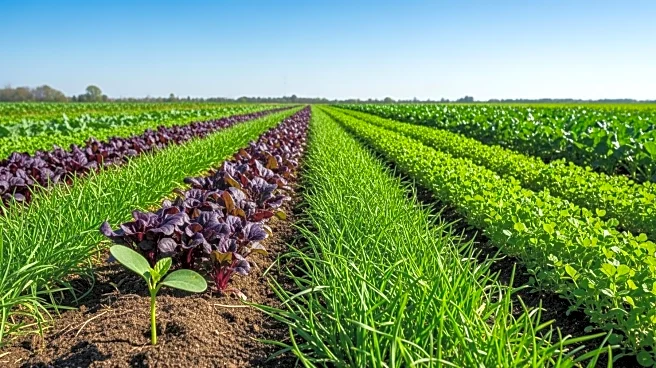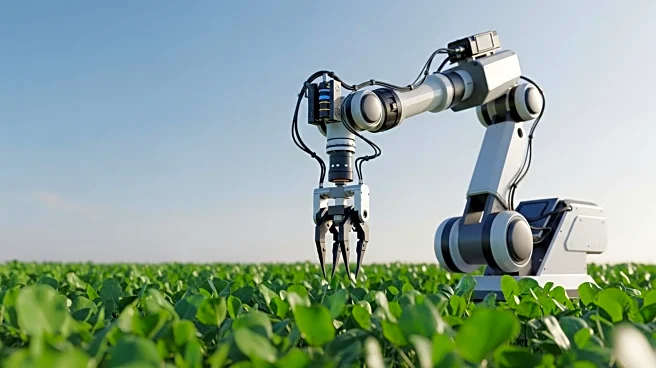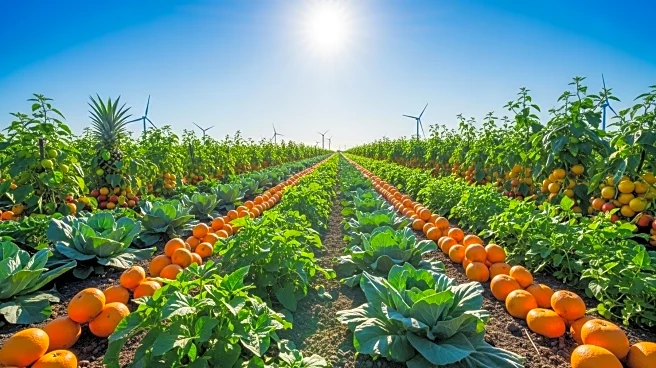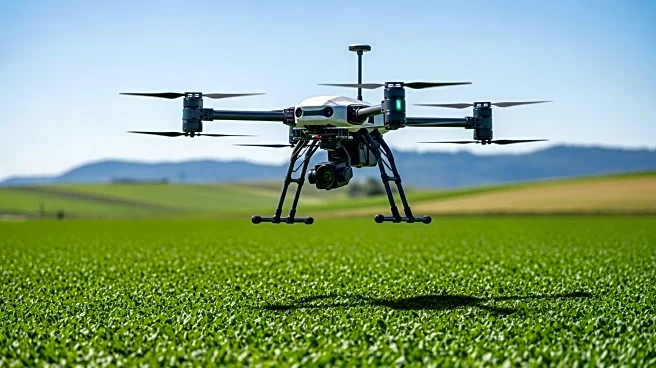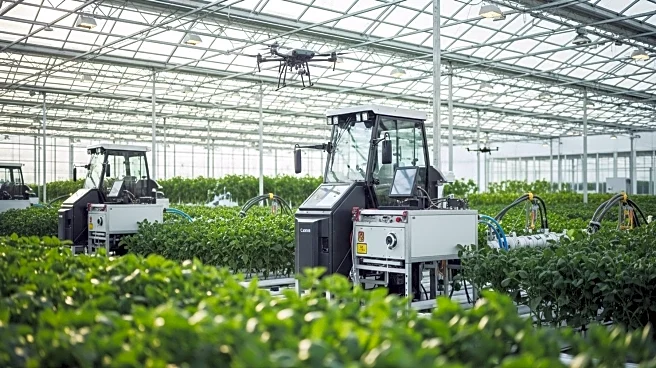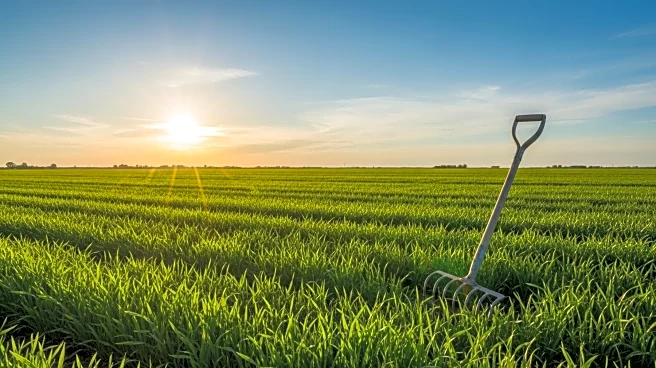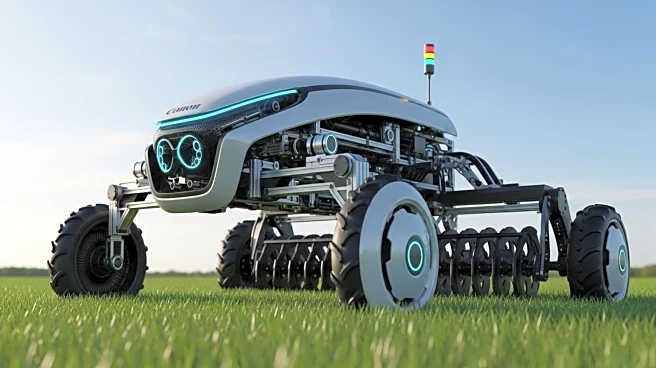What is the story about?
What's Happening?
Autosteer GPS systems are transforming agricultural practices by enabling precise navigation and reducing overlaps in fieldwork, boosting efficiency by up to 30%. These systems utilize global navigation satellite systems (GNSS) like GPS, GLONASS, and Galileo to automate steering for various agricultural machinery. With real-time positioning and machine learning algorithms, autosteer systems maintain consistent paths across fields, minimizing input wastage and optimizing productivity. This technology is becoming increasingly accessible to farms of all sizes, enhancing precision farming capabilities.
Why It's Important?
The adoption of autosteer GPS systems marks a significant advancement in precision agriculture, offering substantial benefits in terms of efficiency, cost savings, and sustainability. By reducing input wastage and improving fieldwork accuracy, these systems contribute to higher yields and lower operational costs. The technology supports sustainable farming practices by minimizing chemical runoff and optimizing resource use, aligning with global efforts to reduce environmental impact and enhance food security.
What's Next?
As autosteer technology continues to evolve, further integration with farm management software and real-time data analytics is expected. This will enable farmers to make more informed decisions, enhancing crop management and operational efficiency. The trend towards full vehicle autonomy and AI-driven features will likely accelerate, offering even greater productivity gains and sustainability benefits.
Beyond the Headlines
The widespread adoption of autosteer GPS systems could lead to significant shifts in agricultural labor dynamics, as automation reduces the need for manual intervention. This may necessitate new skill sets for farm workers and influence educational programs focused on agricultural technology.
AI Generated Content
Do you find this article useful?
